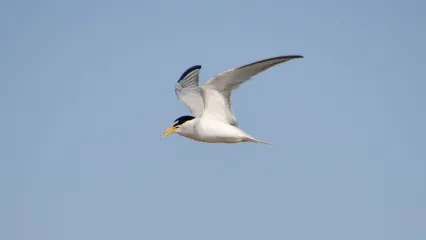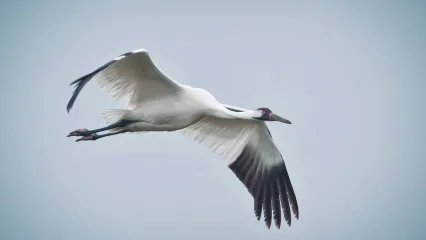
Description
The smallest North American member of the gull and tern family, least terns average 9 inches in length with a wingspan of 20 inches. These birds are slender and streamlined with a white breast and belly, a gray back, and long, narrow pointed wings. Adults have a black crown on the head. The tail is forked and the bill is straight, pointed and a deep yellow color.
Size
8.5-9 inches in length. 19-21 inch wingspan.
Habitat
Terns use a wide array of habitat types for foraging, including large rivers, lakes, ponds, and shallow wetlands. Conversely, nesting habitat is more specific; interior least terns construct nests on the ground and require open areas of sand and gravel that are largely devoid of vegetation.Historically, interior least terns nested along all of the large, sandy prairie river systems in Oklahoma. This included the Cimarron, Canadian, Arkansas, and Red rivers. Least terns that occur in Oklahoma are part of what is known as the “interior” population, which is considered distinct from the least terns that live throughout the coastal and estuarine habitats along the Gulf of Mexico and East Coast. A large part of this distinctiveness is the unique behavior and life history exhibited by interior least terns, such as their preferences of nesting habitat, foraging areas, and prey items.
Life Cycle
Least terns are migratory and only occur in Oklahoma only during the breeding season. Depending on habitat availability, tern nesting colonies can range from 2 to 70 pairs. Nests are constructed from late-May to mid-July and consist of a shallow depression on an open, sandy river bank. Both eggs and chicks are well camouflaged, helping them to remain hidden from predators. In fall, least terns migrate south to the Caribbean and the northern coast of South America. A long-lived species, least terns over twenty years old have been documented.


